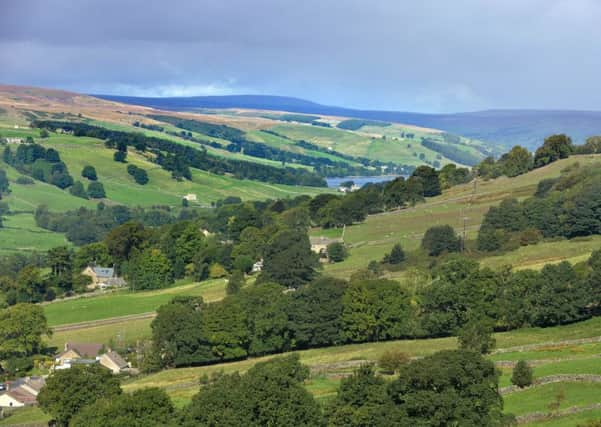‘Crucial’ need to safeguard Yorkshire’s protected landscapes


As it prepares to publish a major conservation blueprint for the next five years, due out tomorrow, the chair of Nidderdale Area of Outstanding Natural Beauty’s (AONB) joint advisory committee, Coun Nigel Simms, has warned that “change is coming in a major way” and the area, which forms the south eastern part of the Yorkshire Dales from Wharfedale to Harrogate, must adapt.
The draft Nidderdale AONB Management Plan 2019-2024 has been created with input from Natural England and the Environment Agency, alongside interest groups, such as farmers, and responses from residents of 21,000 homes across the area.
Advertisement
Hide AdAdvertisement
Hide AdCoun Simms said: “We need to take local action. Our Management Plan for the next five years is crucial as change is coming in a major way. Key challenges include uncertainty around farming post-Brexit, rural isolation, and providing opportunities to engage all generations into the rural economy. Add the national crisis around affordable housing and rural services and the global threat of climate change.
“Despite the challenges, there’s enormous energy from people in Nidderdale to engage in and safeguard our countryside.”
A month-long consultation on the plan, which will be available to view on the AONB website, will open tomorrow. Urging people to give feedback, Coun Simms added: “The previous 2014-2019 Plan acted as a blueprint for everyone who cares about conserving the AONB’s special qualities, including the local community, visitors and volunteers, farmers and landowners, local authorities and government agencies.”
The management plan will come at a critical time for the future of AONBs and national parks across the country, as an independent review into the future of the sites, commissioned by the Government, prepares for publication of its final report in the autumn.
Advertisement
Hide AdAdvertisement
Hide AdThe review, which comes seven decades after Sir Arthur Hobhouse’s visionary report created the first National Parks, will look at how parks and AONB should be financed, whether they should be extended beyond existing boundaries and how individual areas could be improved, among other topics.
Nidderdale’s five-year plan will coordinate action by land managers, members of the AONB’s rural communities, third sector bodies like the National Trust, local authorities, and government agencies.
It will contain policies on what the AONB stands for and a vision of how the AONB should look in 2050, with objectives that are designed to help towards achieving the vision.
Projects as a result of the previous management plan have included delivering business and environmental advice for farmers to get Brexit-ready, training volunteers, restoring hay meadows, planting trees, and supporting rural tourism with initiatives such as the Dark Skies Festival.
Advertisement
Hide AdAdvertisement
Hide AdAONB manager Sarah Kettlewell said: “The AONB is a living and working landscape and people are at the heart of protecting our countryside and safeguarding its future. This Plan is crucial for everyone who cares about conserving the AONB’s special qualities.”
THE “Enthusiasm” for National Parks seen elsewhere around the world could help England build on the strength on its own areas of protected countryside, the man in charge of the Government’s review of parkland said during a trip to Pateley Bridge last autumn.
Writer Julian Glover, who was commissioned by Michael Gove to conduct a review of ways to make England’s greenest spaces fit for the future, spoke during a trip to Nidderdale AONB about what could be learnt from elsewhere.
Mr Glover, whose report is due in the autumn, said despite the challenges of ageing populations and housing shortages, there was real “optimism” change could be wrought.